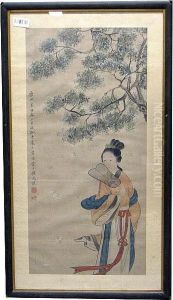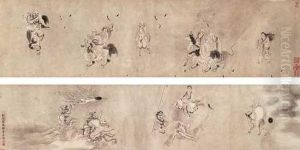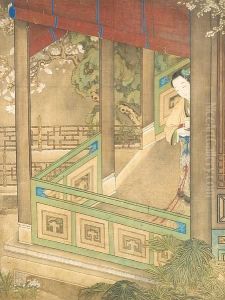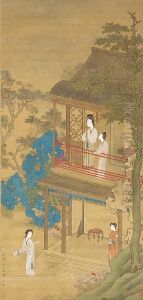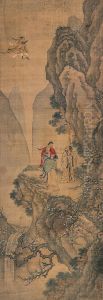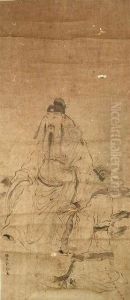Gu Jianlong Paintings
Gu Jianlong, also known as Gu Jian, was a Chinese painter during the late Ming and early Qing dynasties. His exact birth and death dates are not definitively known, but it is generally believed that he was born around 1606 and died around 1687. Gu was active during a period of significant transition in China, as the Ming dynasty gave way to the Qing dynasty following the Manchu conquest.
Gu Jianlong was a native of Wuxi in Jiangsu province, and he is often associated with the so-called Wuxi School of painting. His artistic talents were recognized early on, and he received patronage from notable figures of the time, including scholars and officials. Gu's style was deeply rooted in the literati tradition of Chinese painting, emphasizing personal expression and brushwork over strict adherence to formal rules.
Throughout his career, Gu Jianlong demonstrated a mastery of both figure painting and landscapes, though he is particularly noted for his figure paintings. His work often featured historical and legendary figures, rendered with a refined and elegant touch. Gu's landscapes, on the other hand, conveyed a sense of tranquility and harmony, incorporating the principles of traditional Chinese aesthetics.
Gu's life spanned a tumultuous time in Chinese history, and like many artists of his era, he faced challenges due to the political upheavals. His ability to adapt to the changing times and to serve new patrons under the Qing dynasty contributed to his continued success as an artist. Nevertheless, the fall of the Ming dynasty had a profound impact on the literati community, including painters like Gu, who were deeply connected to the cultural ideals of the fallen regime.
Despite these challenges, Gu Jianlong's reputation as a painter endured, and his works continued to be appreciated for their elegance and expressive quality. Today, Gu Jianlong is recognized as an important figure in the history of Chinese painting, embodying the transition between the Ming and Qing artistic traditions and influencing subsequent generations of painters.
